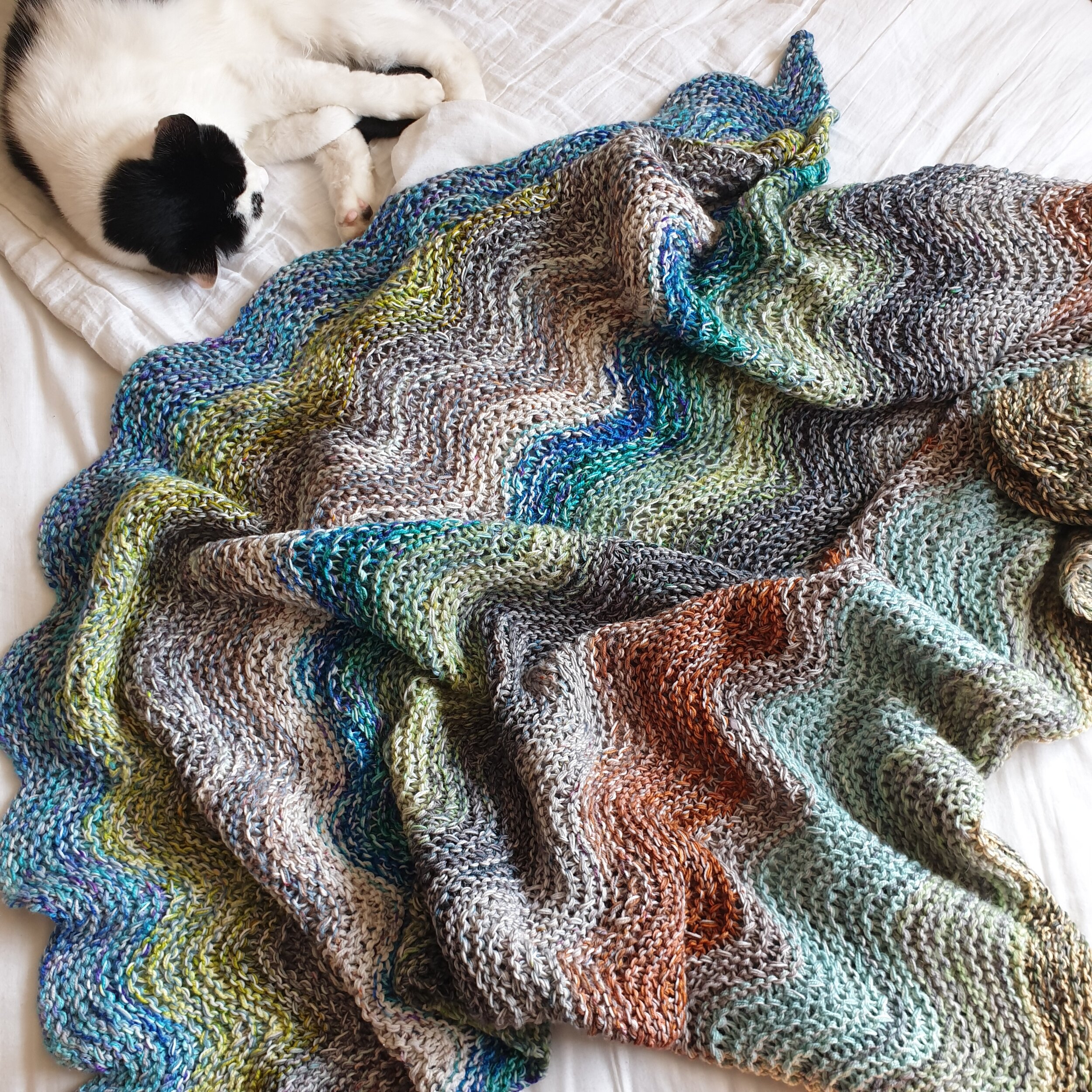I swore that I would never do a Temperature Blanket and yet every January I would be smitten with gorgeous finished objects, fantastic visual representations of the past year in woolly form and be tempted. This year finally got the better of me and I decided to embark on my own.
If you don’t know what I’m talking about a Temperature Blanket is a year long project (usually) where you work a row or two every day.
You decide on a temperature scale and have a different colour to represent each category on that scale. For example I decided to work on a scale of 0-30 degrees Celcius, with the scale in 3 degree increments.
The important thing to note from the outset is that this is your project and you set the rules. There is no standard pattern, although others have published their projects for inspiration and education ultimately your choice of yarn/needles, your selection of colours and scale will make this project completely and utterly unique. That’s the beauty of it.
However, like all epic projects it does require some planning at the beginning. It won’t have escaped your notice that 365 days is 365 rows (or 730 for garter stitch). That is a lot of rows and in chunky yarn (or crochet) you could well end up with something the length of a hallway runner rather than a usable blanket if you aren’t careful.
Scale
Another consideration is the selection of your scale. This is obviously highly dependent on where you live. Based here in the UK we are blessed with a pretty moderate climate without significant extremes. My scale therefore can be in relatively small increments. Doing it in increments of 6 for example might result in too few colour changes to look visually interesting. Many days in summer here can be in the range 18-24 for example.
Colours and yarn
Pick a yarn you love, obviously and that fits your budget. It’s also worth bearing in mind that you might need to buy more if your estimates are off, so pick something that’s readily available and easy to obtain. It sounds obvious but you don’t have to go for the traditional blue = cold red = hot colour scheme. I’ve seen some brilliant ones where the colours are neutrals (greys or shades of natural yarn) for example that look absolutely stunning.
Time
How you pick and record the temperature is also entirely up to you. I decided to go for noon at our favourite place in the Lake District - I check it daily on a weather app. You could also access a historical weather record site for your area and do a retrospective blanket - based on a significant year for you, for example.
My blanket
After seeing some lovely knitted and crochet corner to corner blankets I opted for this style - mainly because the thought of a super long cast on did not fill me with enthusiasm.
Yarn: West Yorkshire Spinners 4ply Signature Sock Yarn
Needles: 3mm
I cast on 3sts and I’m increasing 2 sts every right side row, until the midpoint when I’ll start the decreases. I’m knitting 4 rows (2 garter ridges) for every day.
If you are interested I’ve linked to my Ravelry project page and I’ll be doing updates once a month or so - as I’d hate to spam you with the thing. But I’m hoping that a monthly update will keep me accountable and stop the blanket from languishing in a corner.
Wish me luck. In the immortal words of Antarctic explorer Lawrence Oates “I may be some time”






